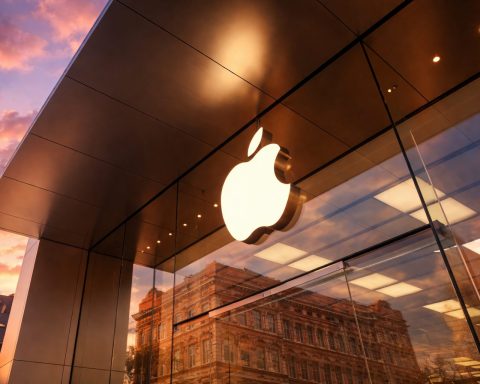Updated: November 7, 2025 (7.11.2025). Apple has reduced maximum U.S. trade‑in credits across most product lines, with cuts that in many cases range from ~15% to 25%, just as holiday shopping kicks off. [1]
Why it matters
Apple’s in‑house trade‑in credits help many shoppers offset the cost of upgrades. With the latest adjustments, you’ll likely pay more out of pocket compared to last month—especially if you were planning to trade an older iPhone or desktop Mac. The timing (right before Black Friday) further raises the stakes for anyone trying to time an upgrade. [2]
Key changes at a glance (U.S.)
- iPhone: The steepest drops hit recent-but-not-current models. For example, iPhone 15 Pro Max now tops out at $470, down from $630 (≈‑25%). Current‑gen iPhone 16 models also fell modestly (e.g., 16 Pro Max from $700 → $670). [3]
- iPad:iPad Air is the outlier, ticking up slightly (about +$15 to $415), while iPad and iPad mini saw small reductions; iPad Pro remains unchanged at up to $695. [4]
- Mac: Apple stopped accepting 12‑inch MacBook trade‑ins; other Macs mostly fell modestly (e.g., iMac from $490 → $375). A new Mac Pro listing showing $2,520 is widely flagged as a likely typo. [5]
- Apple Watch: Mostly minor declines (e.g., Series 10 down $15 to $160), while Ultra 2 holds steady at $335. [6]
Note: Apple quotes “up to” maximum credits; actual offers depend on device condition, configuration, and other factors. Values cited here reflect Apple’s U.S. site snapshots covered by multiple outlets on Nov. 6–7, 2025. [7]
iPhone: older models hit hardest
Across the lineup, Apple trimmed maximum credits most sharply on last year’s devices. The iPhone 15 Pro Max falls by $160 (from $630 → $470), while iPhone 15/15 Plus/15 Pro each drop between $90 and $110. Even the 14‑series and 13‑series see meaningful cuts; for instance, iPhone 13 now tops out at $180 (down from $250). Current models aren’t immune: iPhone 16 Pro Max decreases by $30 to $670, and iPhone 16 is now around $420–$430 depending on the source snapshot. [8]
Why this pattern? Apple’s biggest slashes typically land on devices moving out of the spotlight, aligning credits more tightly with used‑market resale trends heading into the holidays. [9]
iPad: small moves, one quirky increase
The tablet story is milder. iPad Pro remains capped at $695 (no change), while iPad and iPad mini dip to $175 and $255 respectively. The curious exception is iPad Air, which rises to $415 (about +$15). Several roundups note the Air’s bump amid otherwise flat-to-down numbers. [10]
Mac: trade‑in discontinued for 12‑inch MacBook; desktop values trimmed
Apple’s 12‑inch MacBook is no longer eligible for trade‑in through the company’s program. Elsewhere, values mostly edge down: iMac now up to $375 (from $490), Mac Studio$1,030 (from $1,140), and small $10 reductions on MacBook Air/Pro. Multiple trackers also point out a Mac Pro max value listed at $2,520—dramatically higher than before and almost certainly a listing error Apple may correct. [11]
Apple Watch: mostly $5–$15 dips, Ultra 2 unchanged
The wearables category sees light trimming: Apple Watch Series 10 falls $15 to $160; older Series models drop by about $5 each. Apple Watch Ultra 2 remains $335, and SE (2nd gen) holds at $60. [12]
How big are the cuts overall?
Roundups surveying Apple’s updated tables characterize the average decline at roughly 15%–25%, with deeper hits on last‑year iPhones and some desktops. The cadence and scale match Apple’s periodic practice of re‑basing credits to the second‑hand market—particularly ahead of peak shopping weeks. [13]
What to do if you’re upgrading soon
1) Lock in any quotes quickly. Apple’s figures can change without notice. If you’re set on Apple’s program (for the convenience of in‑store/online trade‑in), check your exact device and condition now to avoid further reductions. [14]
2) Comparison‑shop beyond Apple. Third‑party resellers, carriers, and buy‑back firms often beat Apple’s conservative estimates—especially on well‑kept Pro‑tier iPhones and higher‑end Macs. If maximizing value is the priority (not speed or simplicity), price out alternatives. [15]
3) Mind the details. Storage, carrier status, battery health, and cosmetic condition alter the “up to” number. Back up, unpair watches, and sign out of iCloud/Find My to avoid last‑minute hiccups that could further reduce your payout. [16]
4) Watch for corrections. If you’re trading a Mac Pro, keep an eye on Apple’s table—multiple outlets call the $2,520 figure a likely typo. If Apple revises it, your quote may change accordingly. [17]
The bottom line
As of Nov. 7, 2025, Apple’s U.S. trade‑in credits are broadly lower across iPhone, iPad, Mac, and Apple Watch. The iPhone 15 family takes the biggest hit; iPad Air nudges up; 12‑inch MacBook trades are out; and that eyebrow‑raising Mac Pro figure looks like a mistake. If you planned to lean on Apple’s trade‑in to fund an upgrade, build in more cash—or shop around. [18]
Sources & methodology
This roundup consolidates the Nov. 6–7, 2025 updates to Apple’s U.S. trade‑in tables as reported by 9to5Mac, MacRumors, PhoneArena, and Digital Trends; we prioritized items published on Nov. 7 to reflect “today’s” coverage, and cross‑checked overlapping figures where outlets differed slightly (e.g., iPhone 16’s cap). [19]
Additional same‑day coverage: Cult of Mac’s Nov. 7 report echoes the above trends and provides another snapshot of Apple’s updated caps for context. [20]
Editorial note: Apple’s trade‑in credits are dynamic and region‑specific; figures above summarize U.S. maximum “up to” values visible in the sources at publication time. Always confirm your device’s real‑time quote with Apple before purchasing. [21]
References
1. www.phonearena.com, 2. www.digitaltrends.com, 3. www.digitaltrends.com, 4. www.macrumors.com, 5. www.macrumors.com, 6. www.macrumors.com, 7. www.macrumors.com, 8. www.digitaltrends.com, 9. www.digitaltrends.com, 10. www.macrumors.com, 11. www.macrumors.com, 12. www.macrumors.com, 13. www.phonearena.com, 14. www.macrumors.com, 15. www.digitaltrends.com, 16. www.macrumors.com, 17. 9to5mac.com, 18. www.digitaltrends.com, 19. 9to5mac.com, 20. www.cultofmac.com, 21. www.macrumors.com










